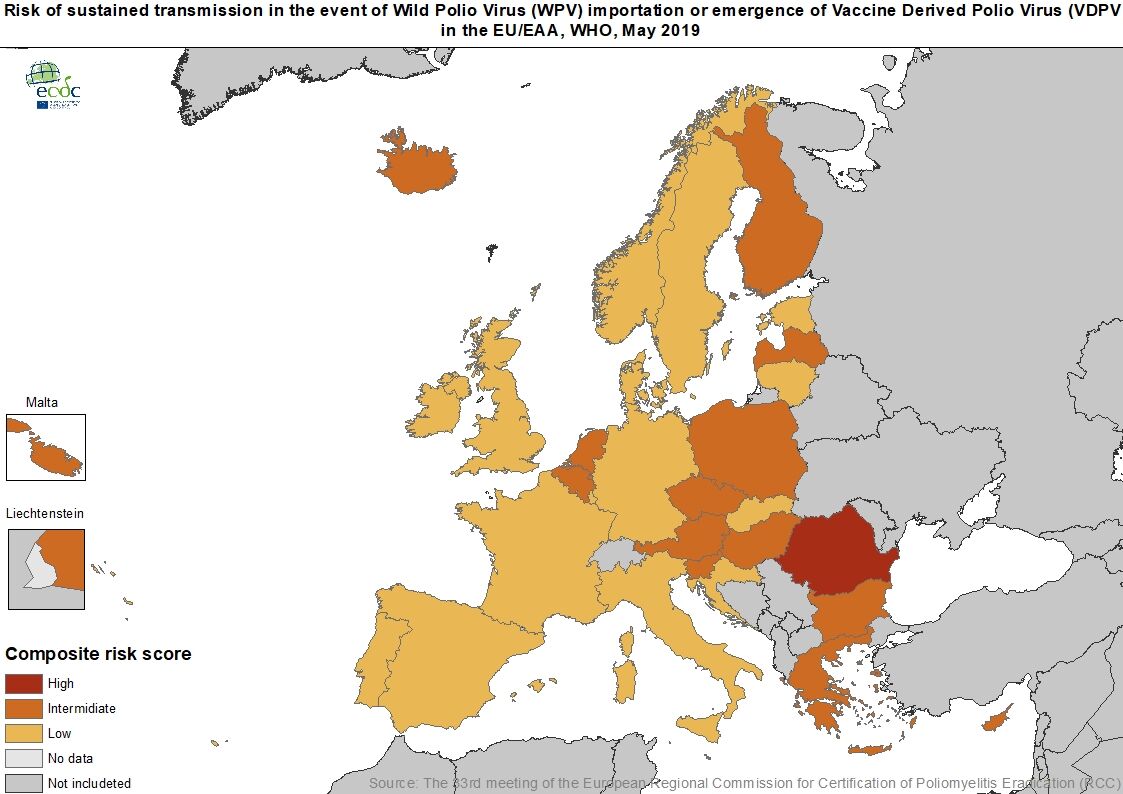Update on the global polio situation and implications for the EU/EEA
According to the World Health Organization (WHO), one EU/EEA country (Romania) and two neighbouring countries (Bosnia and Herzegovina, and Ukraine) remain at high risk of a sustained polio outbreak partly due to insufficient vaccination coverage.

According to the World Health Organization (WHO), one EU/EEA country (Romania) and two neighbouring countries (Bosnia and Herzegovina, and Ukraine) remain at high risk of a sustained polio outbreak partly due to insufficient vaccination coverage. An additional 14 EU/EEA countries are at intermediate risk of sustained polio outbreaks.
Oral polio vaccine is produced from live attenuated Wild Polio Virus (WPV), which on very rare occasions can transform into vaccine-derived pathogenic strains (cVDPV). Recently, WHO has reported on cVDPV outbreaks in Africa and in Asia, for example in the Philippines (also previously reported by ECDC). The occurrence of outbreaks of cVDPV of type 1 and 2, which only emerge and circulate due to lack of polio population immunity, shows the potential risk for further international spread.
Furthermore, the endemicity of WPV in Afghanistan, Pakistan and Nigeria constitutes an additional risk of the disease being imported into the EU/EEA.
To limit the risk of reintroduction and sustained transmission of poliovirus in the EU/EEA, it is crucial to maintain high vaccine coverage in the general population and to increase the vaccination uptake in the pockets of under-immunised populations.
The EU/EEA has remained polio-free since 2002. However, the risk of reintroduction of the virus exists as long as there are non- or under-vaccinated population groups in European countries and poliomyelitis is not eradicated.
ECDC monitors any report of polio cases worldwide in order to highlight polio eradication efforts and to identify events that may increase the risk of reintroducing poliovirus into the EU.




